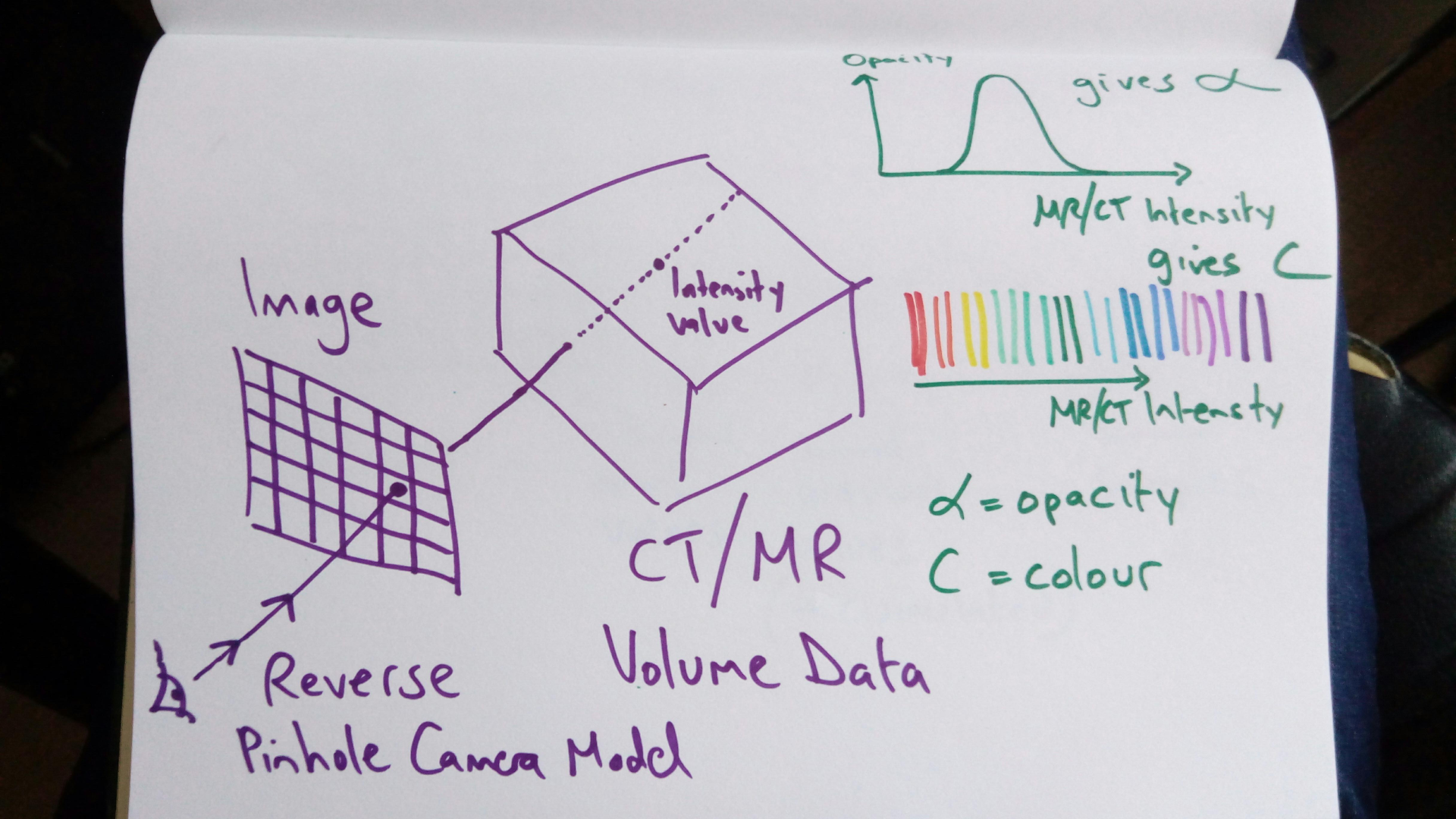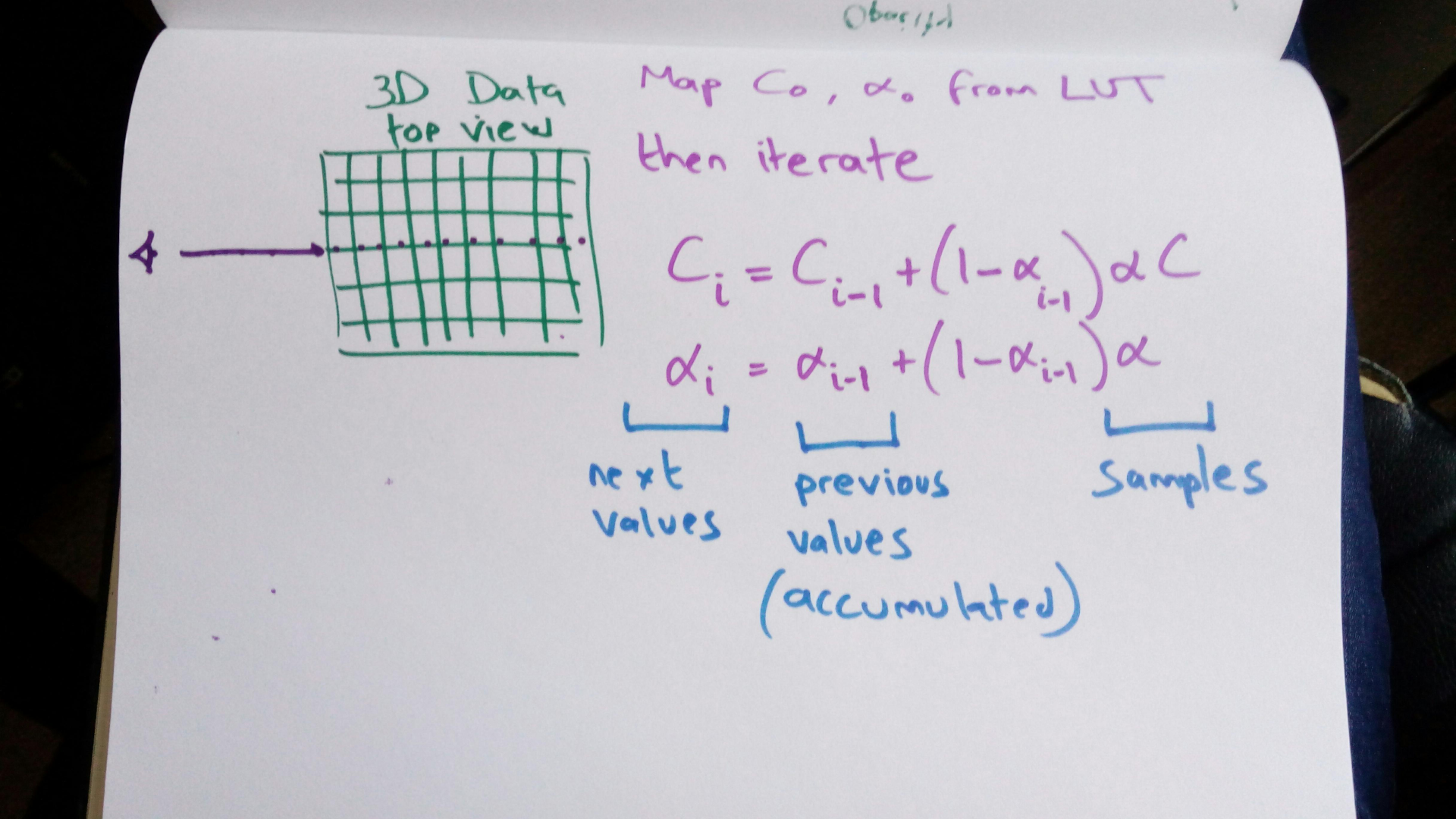7.6. Volume Rendering
The following diagrams and video illustrate the basic concept of volume rendering.

Fig. 7.4 Volume Rendering in medical imaging, is implemented via Ray Casting. Imagine the reverse of a pinhole camera model. For each image pixel, project a ray into space, and evaluate the voxel intensity values along each step through the volume. See video.

Fig. 7.5 At each step along the ray, you evaluate a function to compute the value of the resultant pixel. Functions depend on the volume data value, the opacity transfer function and colour transfer functions. See video.
You should now have a fair idea of what the following VTK.js example is doing:
For the above example, the instructions for use are here.
Other types of volume rendering include:
MIP = Maximum Intensity Projection. For each ray, just extract the maximum value along the ray path.
Average Intensity Projection. Like MIP, but extract average intensity. Not widely used.
Minimum Intensity Projection. Like MIP, but extract minimum intensity. Not widely used.